Fear, Panic, and Paranoia on the Trail
Wild, mountainous, and remote environments rarely fail to throw up situations in which many of us can feel ill at ease. In fact, many are capable of inspiring a feeling of foreboding in and of themselves, even before we find ourselves in their midst.
For many would-be hikers and backpackers, the mere thought of making the step out of their comfort zones to go on a hiking trip is enough to ensure that said “would-be” status remains intact in perpetuity. There are, however, many reasons why this needn’t be the case and why we can remedy our reservations, fears, misgivings, and paranoia the same as we can any ailment.
In this article, we aim to look at the causes of fear, panic, and paranoia on the trail and suggest ways to not only deal with each of them, but to face them proactively and positively.
Before we get down to our more detailed instructions, let’s start off with a few notable do’s and dont’s related to fear, panic, and paranoia on the trail.

- Push your limits gently
- Start small and work up to your goal/fear in small steps
- Hire a guide or go with a hiking group
- Take a few classes in backcountry survival and navigation
- Celebrate every success, no matter how small

- Overthink your next outing before departing
- Overstretch yourself—Rome wasn’t built in a day!
- Think you are alone—we’ve all been there at some point
General Observations and Tips for Dealing With Fear, Paranoia, Panic, and Phobias on the Trail
Acceptance
Everyone who heads into the outdoors does so with some form of limitation. We need only look at the mountain goats scaling vertical cliff walls or birds soaring thousands of feet above the valley floor to understand that humans got a bit of a rough deal in the dishing out of anatomy and physiology for self-propelled travel in wild environments.
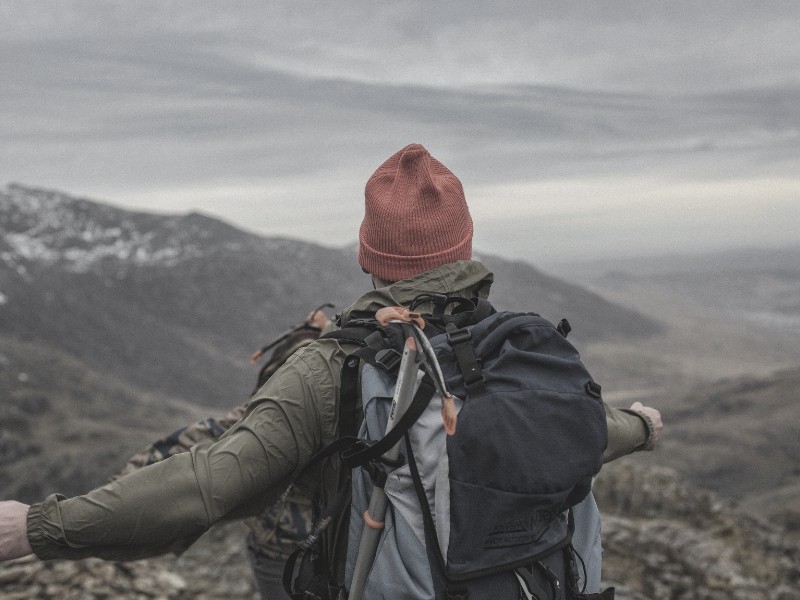
Even within our species, the range of abilities is vast. Some of us are more agile, some more powerful, some more enduring, some quick, some slow, and so on. Psychological quirks or anomalies are just another of these limitations. Each of them is perfectly natural and acceptance is the first step to overcoming and being able to work with them so that they no longer prevent us doing things that can seriously enrich our lives—i.e. hiking, backpacking, exploring the great outdoors in general.
Check out our other guides on health & survival:
- Be prepared for any wilderness emergencies with wilderness first aid training
- Learn how to dispose of human waste correctly with catholes
- Surviving in the wild when things go wrong.
One additional point of note that offers some useful perspective is that the problem works both ways—there are plenty of people out there who feel perfectly at home in nature but have a hard time in cities. In neither case should the change of scenery necessarily be prohibitive to our eventual enjoyment of what either location has to offer. And that enjoyment will come a whole lot quicker, moreover, if we accept our discomfort for what it is instead of trying to fight the unfamiliarity.
Exposure Therapy
A certain degree of risk is inherent to any activity we might choose to get up to in the outdoors. That’s the bad news. The good news is that the risk involved is manageable, avoidable, and/or becomes far less daunting and intimidating with time and experience. In this respect, hiking and backpacking are like anything else in life.
For evidence of this, I recommend reading the biographies of Alex Honnold, Robert MacFarlane’s Mountains of the Mind, or the (auto) biographies of any elite climber, mountaineer, or hiker. Few claim that their audacious and impressive feats were something that came naturally or didn’t terrify them at first. Their eventual success revolved on their determination to reach an established goal by taking small steps in the direction of that goal over a long period of time.
For us mere mortals, the same principle applies. We don’t need to be scaling El Capitan, climbing K2, or trekking across continents. We start small, and once we’re comfortable with “small,” then we move onto “small plus,” and steadily up the stakes until we reach what, for us, constitutes “big.” With each step or increment, the exposure to whatever it is that provokes our fear diminishes.
Specific Backcountry Fears and Phobias and How to Deal With Them
Acrophobia—The Fear of Heights

One of the most common fears experienced by novice and old-hand hikers alike, acrophobia is naturally intensified in the type of terrain in which most are apt to do their hiking. Many routes take place in mountainous terrain and it’s only natural that certain parts of the route will have exposed sections or stretches where the trail skirts long uninterrupted views into “the abyss,” as early mountain writers so dramatically termed it. These drops, understandably, are scary, and the fear is no more than a justifiable and very natural survival instinct.
Here are a few ways you might go about alleviating it:
- Start off on trails with limited exposure
- Try a few sessions of bouldering or roped climbing to get experience at heights
- Consider carrying a 20-30ft length of rope on your hikes so you can rope up with your partner on any particularly scary stretches of trail
- If traveling without a rope, fasten the waist and chest belts on your backpack and have your partner “shadow” you, walking closely behind you with one hand on your pack’s haul loop in case you take a slip
Agrizoophobia

Depending on where you are in the world, the thought of a wildlife encounter in the backcountry can be an experience well worth every ounce of trepidation you might feel. Grizzlies, snakes, wolves, mountain lions, etc. are the type of things that maybe don’t even merit a phobia—any fear of them is pure survival instinct and, to a certain extent, common sense. But for many the fear overblown and prohibitive to their enjoyment of the outdoors.
A few stats may prove useful:
- Bear attacks in the US are rare, with roughly 1.25 deaths per year from black bear attacks and the total (including brown bear and Grizzly attacks) ranging from 2-5 per year
- Deaths from snake bites in the US average at 5.2 per year
- Fatal wolf attacks in the US average out at roughly 1 per decade.
So when you compare, say a fear of bears, with the almost 50,000 that die each year in traffic incidents and you have some cause for consolation and relief.
Nevertheless, taking precautions is never a bad idea:
- If hiking outdoor in bear country, take bear safety precautions – carry bear spray, never take food into your camping tent at night, camp only in designated areas, and learn what to do in the event of a face-to-face encounter with a bear
- Make lots of noise while you hike. In most cases, any animals will disperse long before you reach them
- If you happen to spot any animal in the wild, give them a very wide berth, even if it means leaving the trail for some distance
Hylophobia (fear of forests)
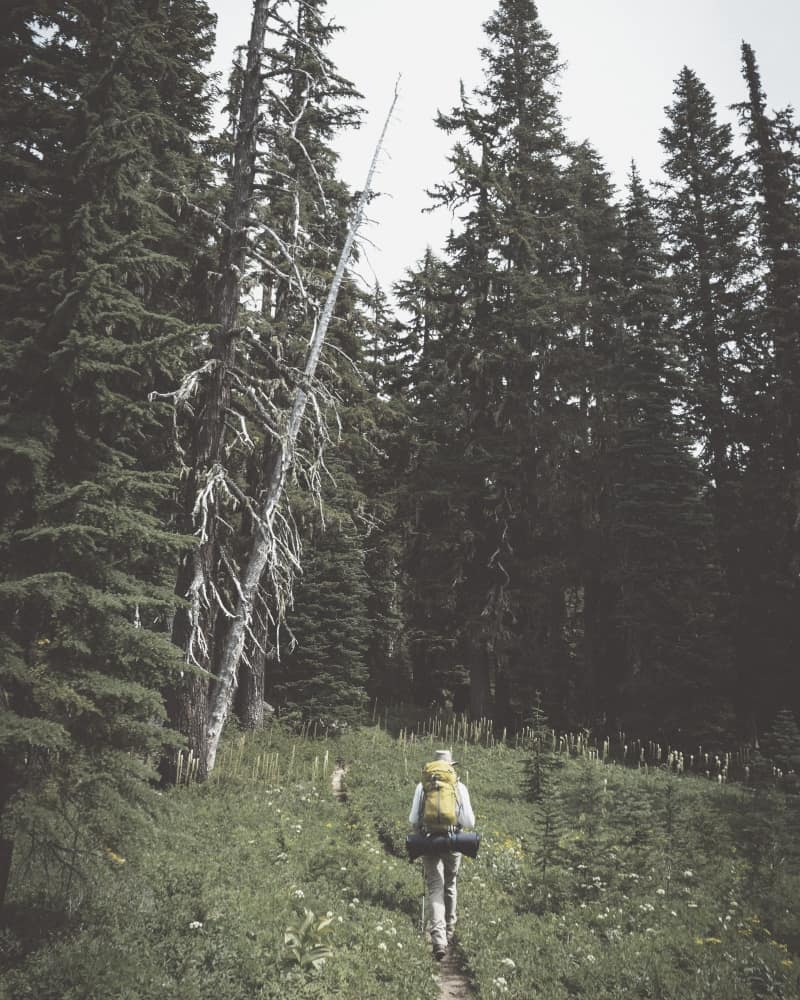
Forests can be spooky places at the best of times, even for those of us with no disproportionate fear of what may be lurking within their depths. Over the centuries, our literature has been replete with all kinds of eerie tales of mysterious goings-on in forests and, for various reasons, even in modern times the woods’ bad rep continues.
Should you happen to have inordinate misgivings about hiking in the woods, the following tips may help to assuage your fears:
- Always hike in a group
- Stick to established trails
- Schedule your hike so you’ll arrive at camp or back to your car before dark
- Carry trekking poles for self-defense (I also know at least two hikers who refuse to go anywhere without an ice axe, even in summer)
- Carry an emergency beacon/satellite communicator for peace of mind
Agoraphobia
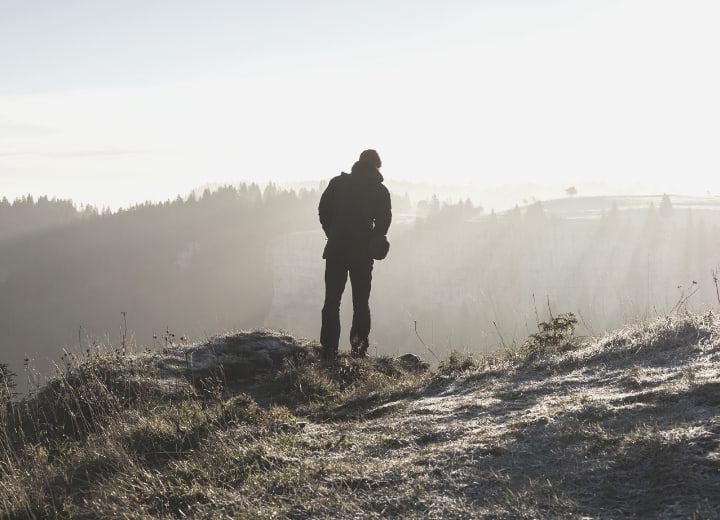
Contrary to popular belief, agoraphobia is not only the fear of large spaces but can also apply to the fear of being far from home. For sufferers of panic attacks, leaving the safe, predictable comfort zone of home for the great unknown of wild, remote territory on a hike naturally presents a bit of a problem. If you are prone to panic when venturing far from the safe and familiar, the following tips may just help:
- Take small steps: start with a few shorter day treks
- Don’t stray too far from home at the outset
- Make a list of emergency exit routes before you set off—having this alone will help to reduce trepidation
- Make sure your group know of your phobia and stick together on the trail
- Invest in a GPS device and learn how to use it
For the tale of one hiker who overcame her agoraphobia to hike the entire Appalachian Trail, check out this link.
Nyctophobia (fear of the dark)
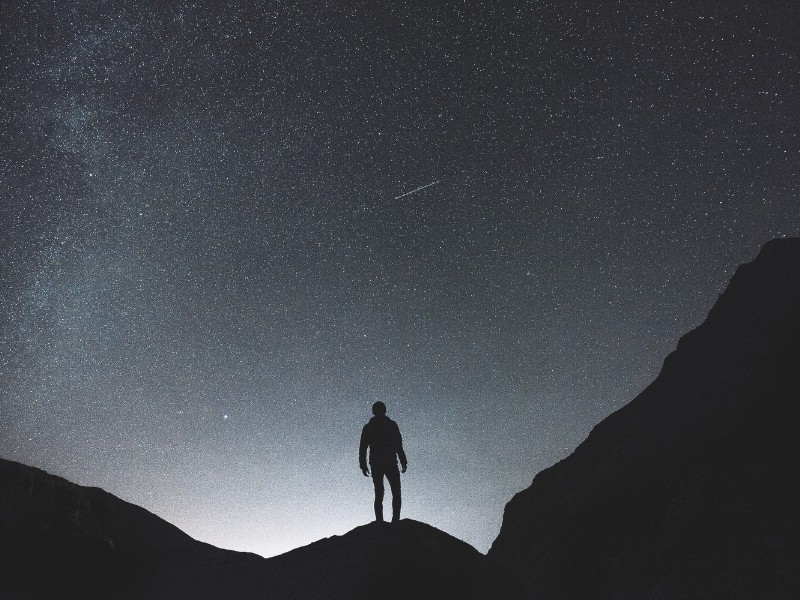
Fear of the dark is something all of us have experienced at some time in our lives to a lesser or greater degree. For some of us, however, that fear causes more foreboding than for others. Because backcountry environments lack the artificial lighting that may put us more at ease back home in the town or city, heading for a long hike or on a camping trip in the wilderness poses a potential spookfest for anyone not entirely comfortable with the dark.
A few measures that might mitigate the problem include the following:
- Carry several sources of illumination—a lantern mantle, a flashlight, and a headlamp
- Carry spare batteries for the flashlight and the headlamp
- Try to finish your day’s hiking well before dusk
Entomophobia (fear of insects)

Entomophobes can probably think of no worse scenario than hiking and camping in nature, which to many represents the mother lode of creepy crawlies.
Depending on where you are in the world, backcountry locations are sure to be populated by just about every bug you can think of: ants, wasps, bees, ticks, moths, lice, termite, spiders (technically an arachnid), midges, mosquitoes, leeches, and many more.
Here are a few tips to help ensure you don’t feel you have to avoid going to the outdoors altogether on account of your aversion to nature’s puniest pests:
- Reapply bug-repellent creams frequently
- Carry a mosquito net for your tent
- Consider using a suspended tent
- Wear a cork hat to ward off flies and mosquitoes
- Burn sage in your camp at night
- Wear a midge net over your face/hat
- Keep your tent’s mesh panels zippered up at all times
Ophidiophobia (fear of snakes)

Does this one really merit classification as a phobia? Such is the nature of the animal kingdom’s most infamous reptile, viewing it with at least a smidgen of trepidation is only natural. That said, snake encounters are very rare, often avoidable, and instances of snake bites comfortingly infrequent (7-8,000 per year with less than 1 in 500 resulting in death).
If those stats don’t assuage your fears, follow these tips when hiking in terrain where you expect to find snakes:
- Wear snake gaiters
- Use trekking poles—although snakes’ hearing isn’t as good as that of humans, they pick up vibrations from relatively large distances and will disperse if you beat the ground in front of you with your poles
- Keep your eyes trained on the trail
- Never place hands or feet where you can’t see them (i.e. dense scrub, gaps between rocks, over rock ledges when scrambling)
Pre-Hike Preoccupation: A Word on Trail Readiness and Expectation Management
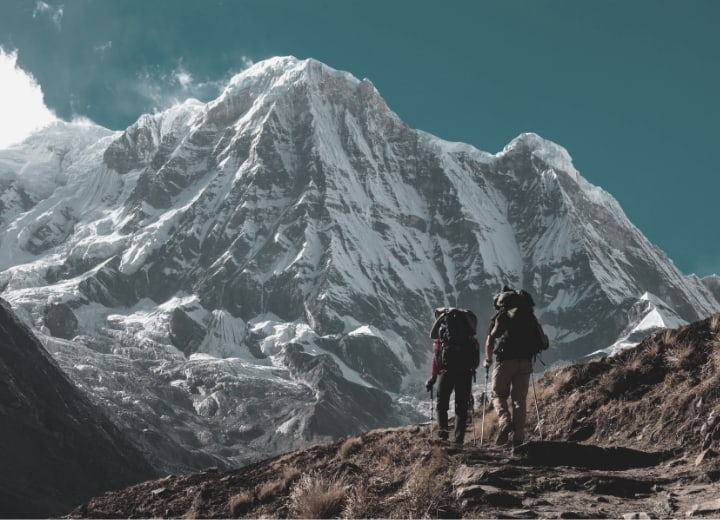
Pre-hike paranoia, panic, fear, and general apprehension can be caused by many factors—not necessarily any specific phobia.
Some of the thoughts that might go through our minds before setting off include:
Am I fit enough? Do I have the necessary skills? Do I have the right gear? Have I forgotten anything? What will I do if I encounter X? What if I run out of water or have to cross a river or find ice on the trail or get an injury? What if I’m too slow for my hiking partners? And, last but not least, am I too fearful, paranoid, or panicky to be hiking at all?
Check out our other guides on health & survival:
- Outside and Exposed? What to do in a thunderstorm?
- What does poison oak look like?
All of these are legitimate concerns. And when headed into the backcountry a certain amount of fear is not necessarily a bad thing, at least compared to taking an overly lackadaisical approach or falling into complacency.
The fact that you’re reading this already shows that you’ve surmounted the first hurdle: you’re doing your research and looking for ways that will allow you to get out and enjoy the countless benefits nature can bring. This showing of incentive already puts you one step ahead of the many hikers who head out into the wild unprepared or with an approach lacking the requisite care.
The next step is to understand that what constitutes “trail readiness” is decided by no one but you. There is no universal standard or benchmark we all must achieve before we’re ready to set off on a hike. Double amputees have climbed Everest. An 82-year-old has hiked the entire Appalachian Trail from end to end in one go. Countless hikers, mountaineers, and climbers with all kinds of mental illness or physical disability set off on adventures every day.

In fact, the outdoors is the arena of the everyday hero. Unlike other pastimes or sports, there is no “par for the course,” no adversary on the other side of the net, nobody recording our batting averages or goals-per-game ratios. We compete only with ourselves. We set the goals. We define what we deem to represent “success.” Then we set out to achieve it in our own time. And in our own way. There is no predetermined blueprint we have to follow and progress is achieved, literally, by simply putting one foot in front of the other, step by step.
Final Thoughts
While sufferers of panic attacks, paranoia, anxiety, and other psychological troubles will know only too well that episodes are often are self-starters and often need no specific stimulus or “trigger” to set them off, the great outdoors and a number of the situations we might encounter there can easily exacerbate things and leave certain misgivings about our wellbeing on any given trip.
This element of risk, however, doesn’t mean we should forego heading to the wilds entirely. Far from it. It just means we have different parameters to work within—ones, importantly, that are easily expandable with time, effort, and experience.
The big, untold secret of hiking is—for all its expensive gear and epic destinations—it’s still basically just walking around outside. The fear, discomfort, apprehension we feel prior to or during a hike, in many cases, may well simply be accounted for by misgivings we harbor about the unknown and leaving our comfort zone.
Although I’m not a big fan of the motivational quote epidemic that’s permeated the old interwebs in recent years, there’s one I can’t help being fond of: life begins at the end of your comfort zone. If I could teach newcomers to hiking one thing, it would be this—the rewards far outweigh the risks and those risks, moreover, normally aren’t half of what we might have built them up to be.
On the other side of our fears there’s a whole world of goodness awaiting us.
Check out our other guides on health & survival:
- Find out our choice for best camping hatchet
- A microfiber camping towel always finds its way into our pack list
- Find out which brand/model is the best multitool for backpacking
- Folding camp saws can be a useful tool on the trail.

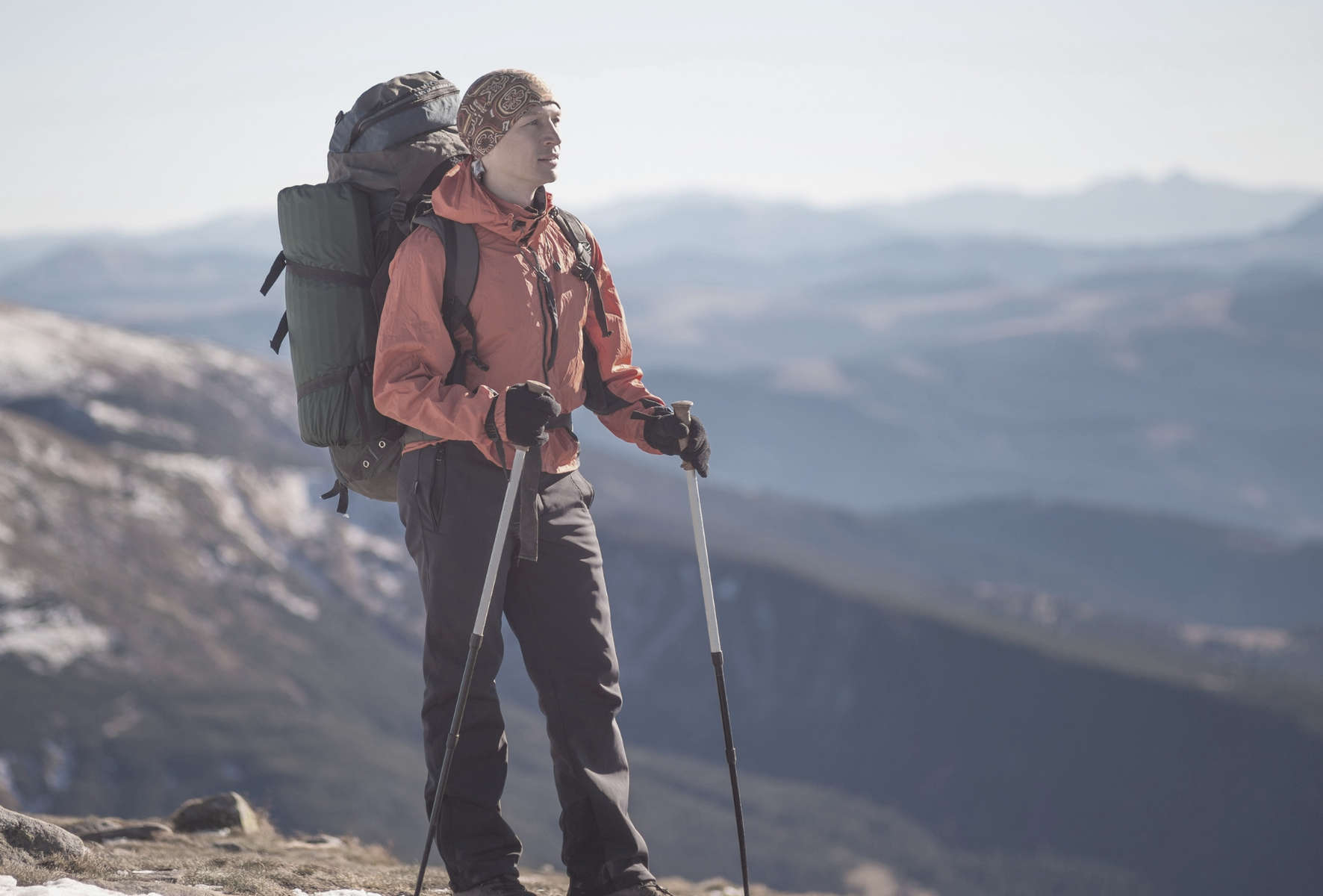
Backpacker Magazine put together a list of the top back country dangers, including the common ways backpackers die on outings. Can you guess what was #1? Drowning! Here is a link to the article: http://www.backpacker.com/natural_born_killers_top_backcountry_killers/skills/12597
Remember Philmont Rule #2: “Don’t Die.” (Rule #1 is “Always look good.” Rule #3 is “If you have to break Rule #2, do not break Rule #1.)